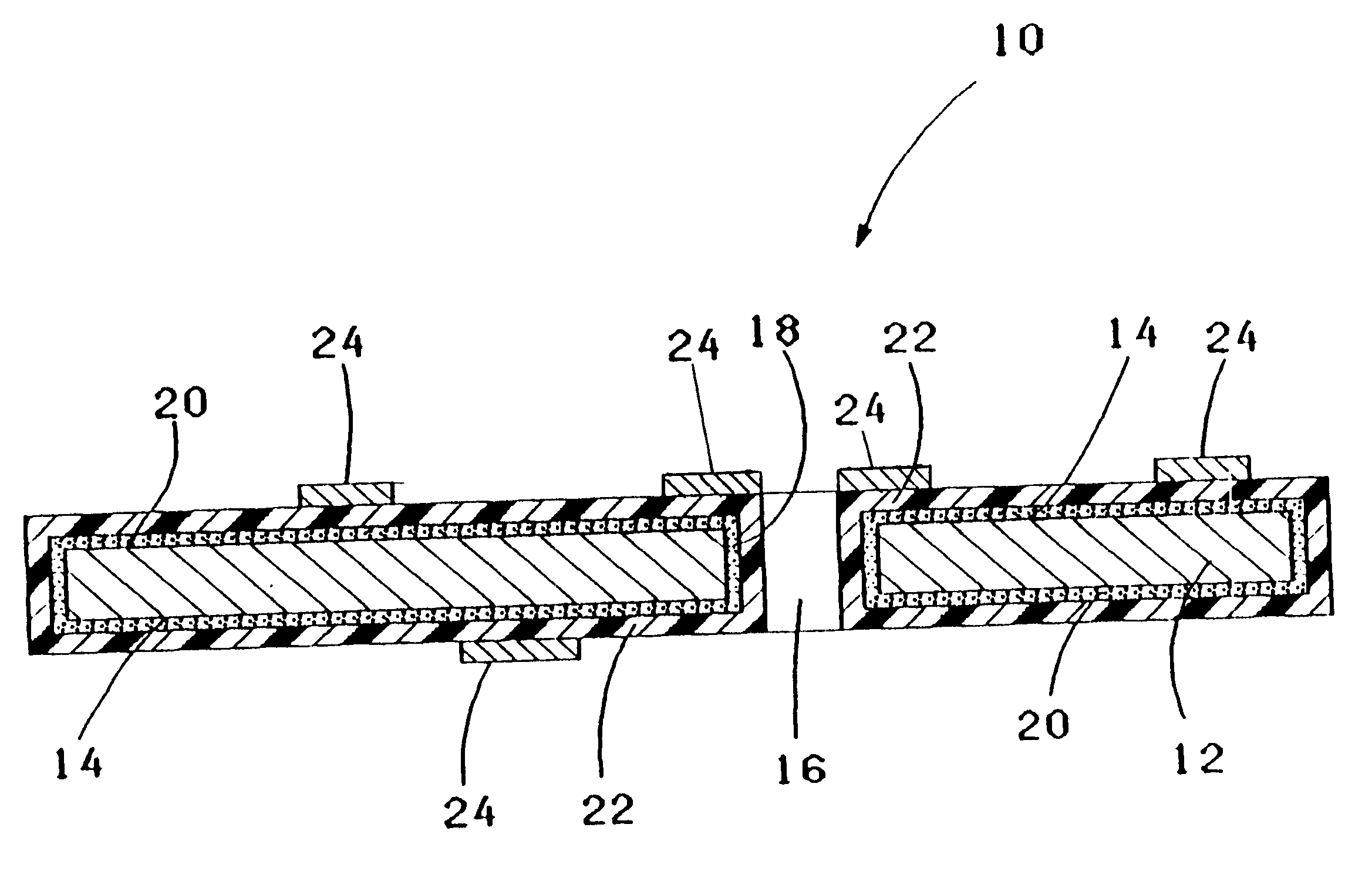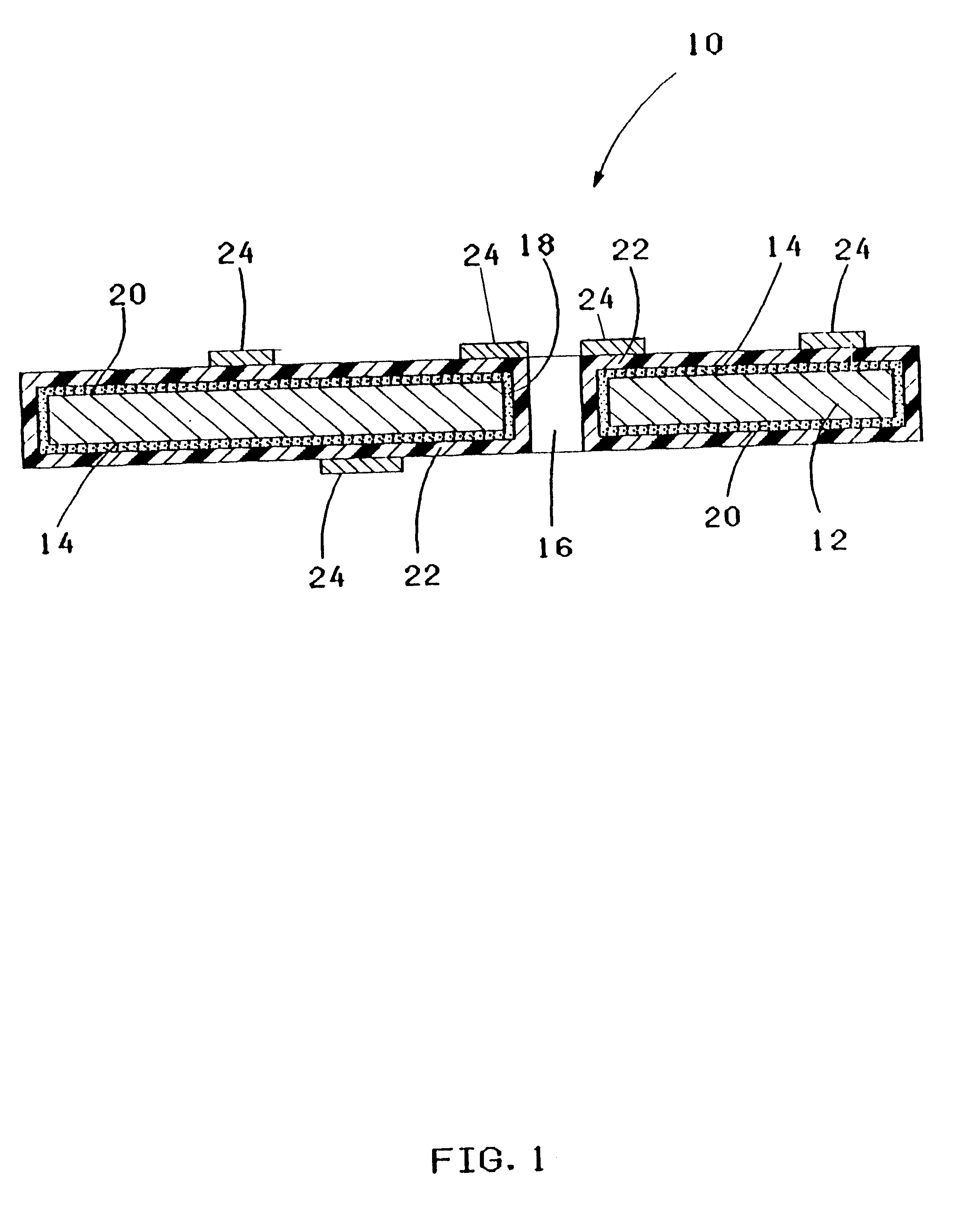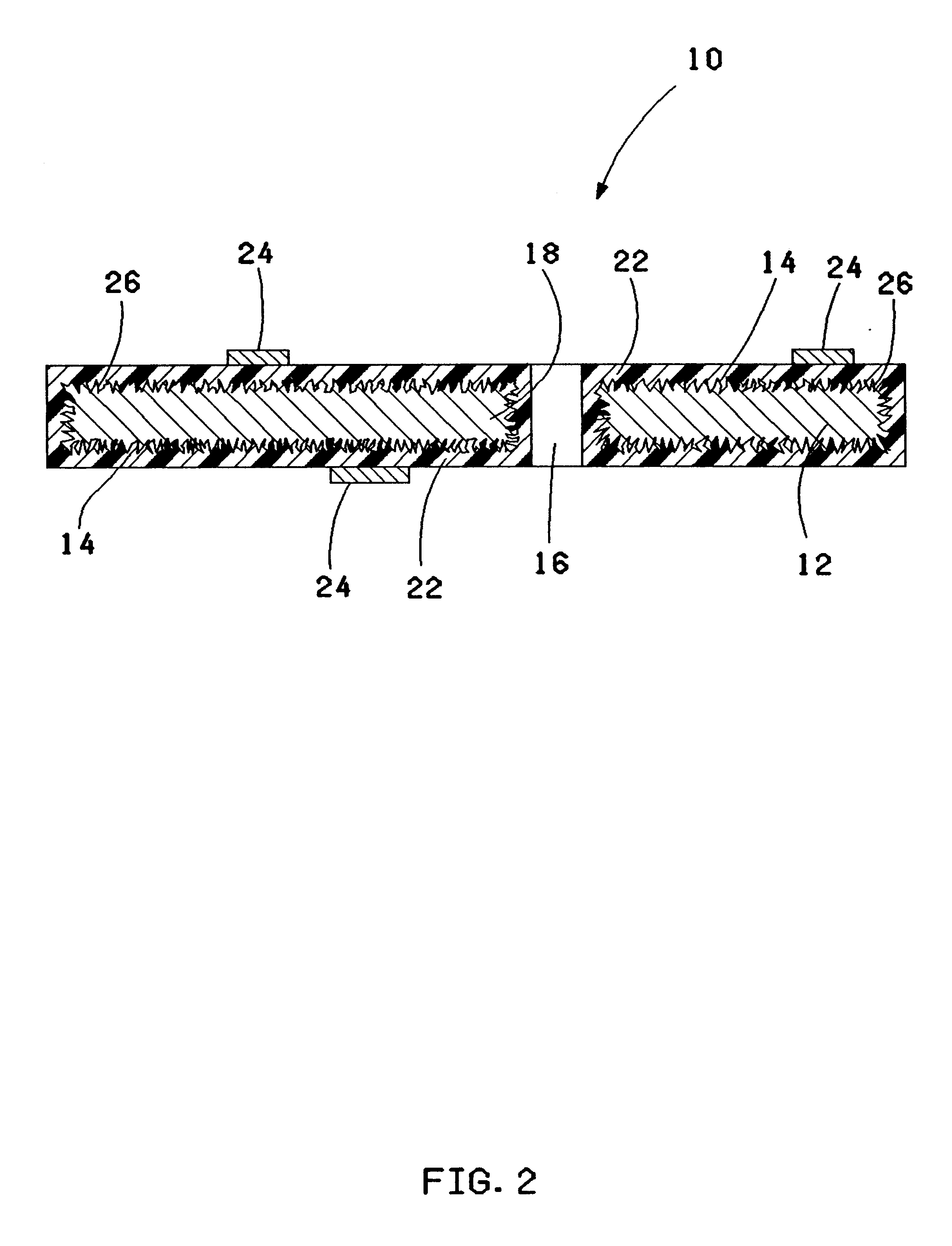Laminate circuit structure and method of fabricating
a technology of laminate circuit and fabrication method, which is applied in the direction of printed circuit, other domestic articles, and metal adhesion improvement of insulation substrates, etc., can solve the problems of exacerbate many of the problems of additional thickness, and achieve the effect of reducing costs
- Summary
- Abstract
- Description
- Claims
- Application Information
AI Technical Summary
Benefits of technology
Problems solved by technology
Method used
Image
Examples
Embodiment Construction
13 inch wide roll of 12.5% / 75% / 12.5% by weight copper / Invar / copper was coated on both sides with 12 mil. thick Dupont MI (1.5 mil. thick photo resist). The resist is exposed to 60 MilliJoules of UV light on each side (one side is pattern imaged and the other side is blanket exposed) using a conventional PCB exposure machine. The roll is indexed through the exposure machine with one unit circuit board image exposed at a time. The completely exposed roll is then set up on a roll to roll Mylar peel / develop / etch / strip line and conventional chemical developing, etching and stripping is performed. Next the roll is moved to a roll to roll horizontal process tool capable of applying the Atotech Bondfilm(TM) treatment process for further processing. The step of forming the adhesion promoting layer includes the step of applying a coupling agent, a second metal layer, or a metal oxide, as described above, on the first surface of the first metal layer and on the at least one side wall of the th...
PUM
| Property | Measurement | Unit |
|---|---|---|
| thickness | aaaaa | aaaaa |
| thickness | aaaaa | aaaaa |
| sizes | aaaaa | aaaaa |
Abstract
Description
Claims
Application Information
 Login to View More
Login to View More - R&D
- Intellectual Property
- Life Sciences
- Materials
- Tech Scout
- Unparalleled Data Quality
- Higher Quality Content
- 60% Fewer Hallucinations
Browse by: Latest US Patents, China's latest patents, Technical Efficacy Thesaurus, Application Domain, Technology Topic, Popular Technical Reports.
© 2025 PatSnap. All rights reserved.Legal|Privacy policy|Modern Slavery Act Transparency Statement|Sitemap|About US| Contact US: help@patsnap.com



